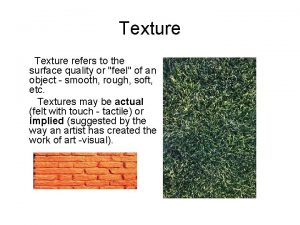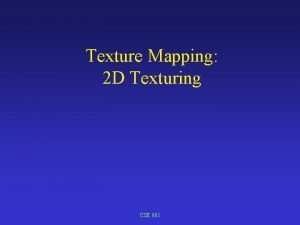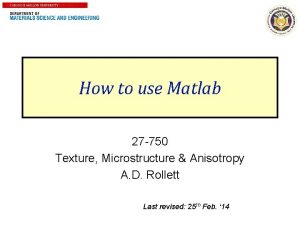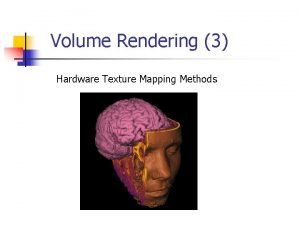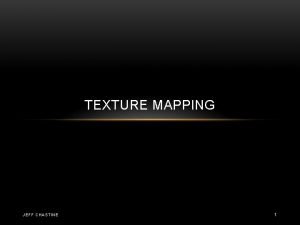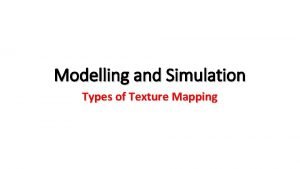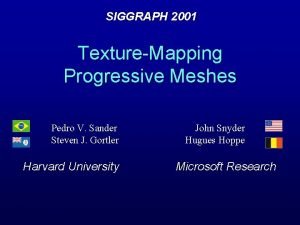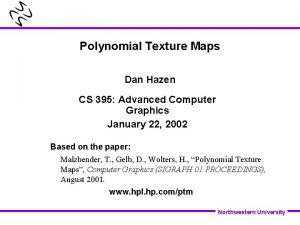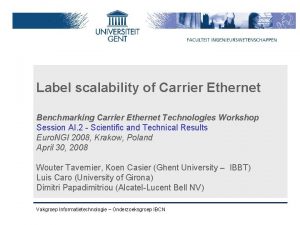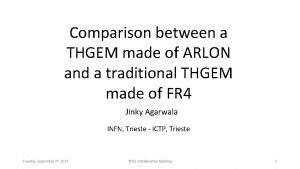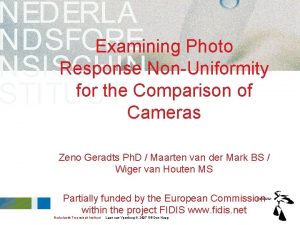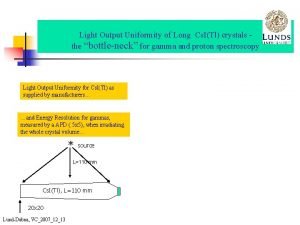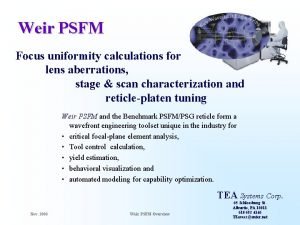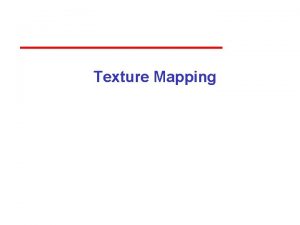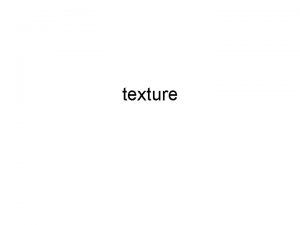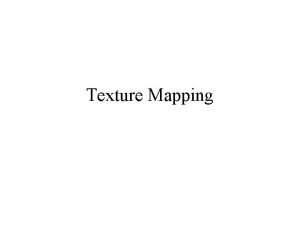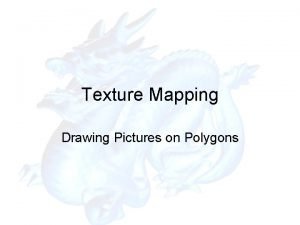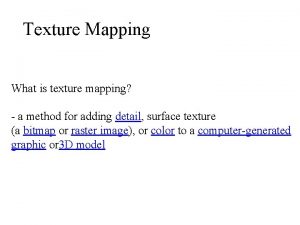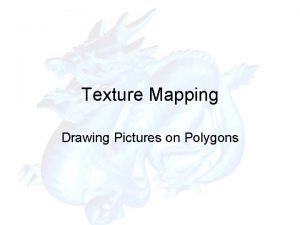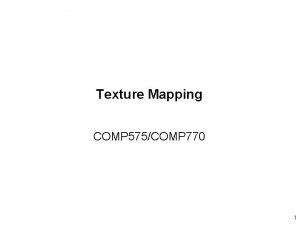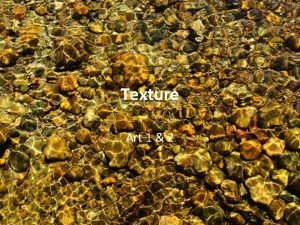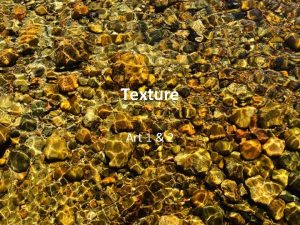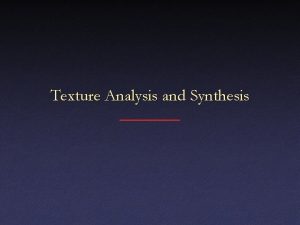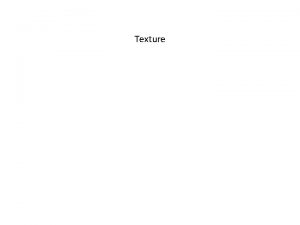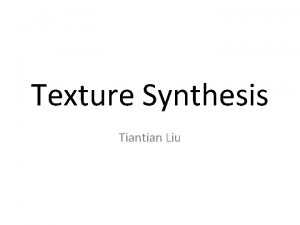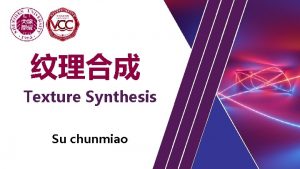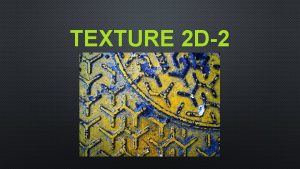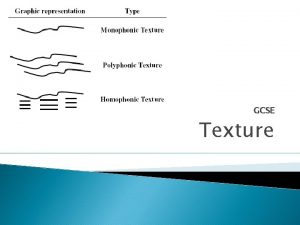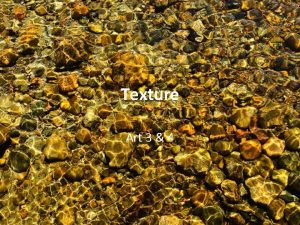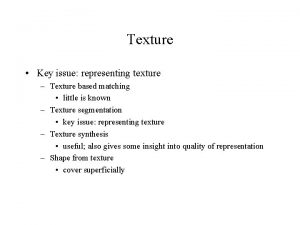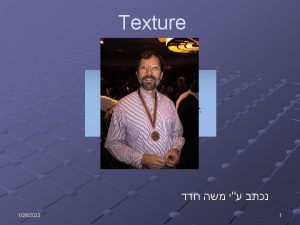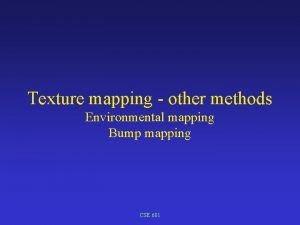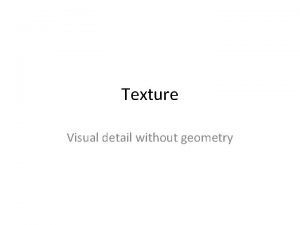Challenges in mapping structural uniformity texture of the

























- Slides: 25

Challenges in mapping structural uniformity & texture of the cubic phases in butterfly and beetle wing scales with synchrotron pin hole ultra small angle (x-ray) scattering Christopher J Garvey, Bodo D Wilts, Ben Kent, Stephen Mudie, Vasyl Garamus, Pawel Kwasniewski, Adil M Mughal & Gerd Schroeder-Turk

Background • Structural colours made from pigments and photonic crystals – Social and mating signaling – Warning to predators – Nanostructures • Photonic crystals – Security devices – Biomimetic technology

Structure of butterfly scales • Most studies have used SEM/TEM, tilt-series electron tomography • Simple cubic • Face centred cubic • FCC arrangement of air spheres in chitin • Difficult to obtain 3 D from SEM and TEM data • Michielsen and Stavenga – Qualitative pattern matching K. Michielsen and D. G. Stavenga, Journal of the Royal Society Interface, 2008, 5, 85 -94.

Cubic Structure Formation • Single gyroid, I 4132 • Lipid membranes and smooth endoplasmic reticulum form a double gyroid structure (Ia 3 d) – template (? ? ) • Chitin is deposited and polymerised in extra-cellular space V. Saranathan et. al. , Proc. Natl. Acad. Sci. U. S. A. , 2010, 107, 11676 -11681.

Aims • (BIG) Wing as photonic (templated) Crystals. • (specific) Variation of: – unit cell parameters – grain size • within the wing of an individual, • between individual of a given species • different species.

Synchrotron Pin-hole SAXS Parides Sesostris Southern Cattleheart 100 μm Callophrys Rubi Green Hairstreak • Average 3 D structure within the volume illuminated with an x-ray beam. • Very large unit cell size ( very small q -values) • Pushing the limits of modern synchrotron SAXS at low q & Dq (pixel size): Callophrys Gryneus Juniper Hairstreak 200 nm

SAXS/WAXS Beamline – Australian Synchrotron • Optimise the Dqresolution and qmin – – 7. 2 m camera length. 8. 4 ke. V x-rays (1. 476 Å). qmin = 0. 008 Å-1 spot size of 250 x 100 mm (multiple scales). – Pixel size on the Pilatus 1 M detector is 172 x 172 mm.

ID 02 - ESRF • 10 m camera length (now 30 m). • qmin = 1 x 10 -4 Å • a spot size of 20 x 50 mm (single scales) • Fre. Lon Kodak detector (pixel size 80 x 80 mm).

Method & Analysis • Position resolved SAXS (grid) on wings. • Identification of phase. • Automatic (radial average) fitting of unit cell size and peak width (grain size). – mapping onto image of wing.

Structurally Green Butterflies Parides Sesostris Southern Cattleheart This species is native to the Americas. It is widespread from Mexico until Brazil and Peru. Callophrys Rubi Green Hairstreak Found in most of Europe, North Africa, Russia, Asia Minor, Siberia, Amurland, Baluchistan and Chitral. Callophrys Gryneus Juniper Hairstreak North America

Butterfly wings "Single-Gyroid" I 4(-1)32 • All patterns powders (many grains with a scale). • Large unit cell (~350 nm). • Nature of template? (dspacing is very large!)

Rubi 2 Large scan 1230 points 300 x 300 um grid 3. 41 hrs x-rays into page x-rays out of page

Rubi 2 Large scan 1230 points 300 x 300 um grid 3. 41 hrs x-rays out of page Basis length x-rays out of page width

• Superposition of isotropic scattering pattern and fibre pattern

x-rays out of page Basis length < 346 nm x-rays out of page Basis length > 346 nm

Pari 1 Parides Sesostris

Pari_1_scan 1035 points step size 0. 35 mm 15. 4 x 7 x 7 mm grid

Pari_1_scan 1035 points step size 0. 35 mm 15. 4 x 7 x 7 mm grid

Parides Sesostris - Mappping

Butterfly - summary • SAXS patterns superposition of isotropic (scales) and anisotropic pattern (wings ribs). • All butterflies had single gyroid phase. • Unit cell characteristic of species. • Some variation within species. • Peak width (grain size? ) characteristic of species.

Diamond weevil (Entimus imperialis) • Diamond phase. • Large crystallites (~beam size).

Further synchrotron work (Vasyl Harumus GKSS) • Butterfly wing scales are certainly isotropic in some crystallographic directions. • Weevil scale is close to single crystal. • Very small spot size ~ micron size, pin-hole with axis of rotation and beam co-localised.

Challenges? • qmin. • q-resolution (Dq). • Large amounts of data/spatial heterogeneity • Mapping average grain size. • D-spacing. • Orientational parameter

Small Angle Scattering (SAS) Vs Small Angle Crystallography (SAC) SAS • Large continuous q-range. • Dq less important (qdependant!!!!). SAC • Small q-range (small number of higher order reflections). • Anisotropic. • Dq more important. Can be optimised with: – l. – Detector. – SDD.

 Texture refers to the
Texture refers to the 2d texture mapping
2d texture mapping Matlab texture mapping
Matlab texture mapping Summed-area tables for texture mapping
Summed-area tables for texture mapping Texture mapping algorithm
Texture mapping algorithm Jeff chastine
Jeff chastine Different types of texture maps
Different types of texture maps Pedro v. sander
Pedro v. sander Northwestern university
Northwestern university Carrier ethernet performance benchmarking
Carrier ethernet performance benchmarking Quality control definition
Quality control definition Friabilator function
Friabilator function Lamp lumen depreciation factor
Lamp lumen depreciation factor Uniformity
Uniformity Usp weight variation limits
Usp weight variation limits Content uniformity test for tablets
Content uniformity test for tablets Photo response non uniformity
Photo response non uniformity Content uniformity test
Content uniformity test Esrlight
Esrlight Inspect uniformity of skin color rationale
Inspect uniformity of skin color rationale Psfm maintainance
Psfm maintainance Definition of large volume parenterals
Definition of large volume parenterals Forward mapping vs backward mapping
Forward mapping vs backward mapping Terjemahan
Terjemahan The associative mapping is costlier than direct mapping.
The associative mapping is costlier than direct mapping. Sơ đồ cơ thể người
Sơ đồ cơ thể người
